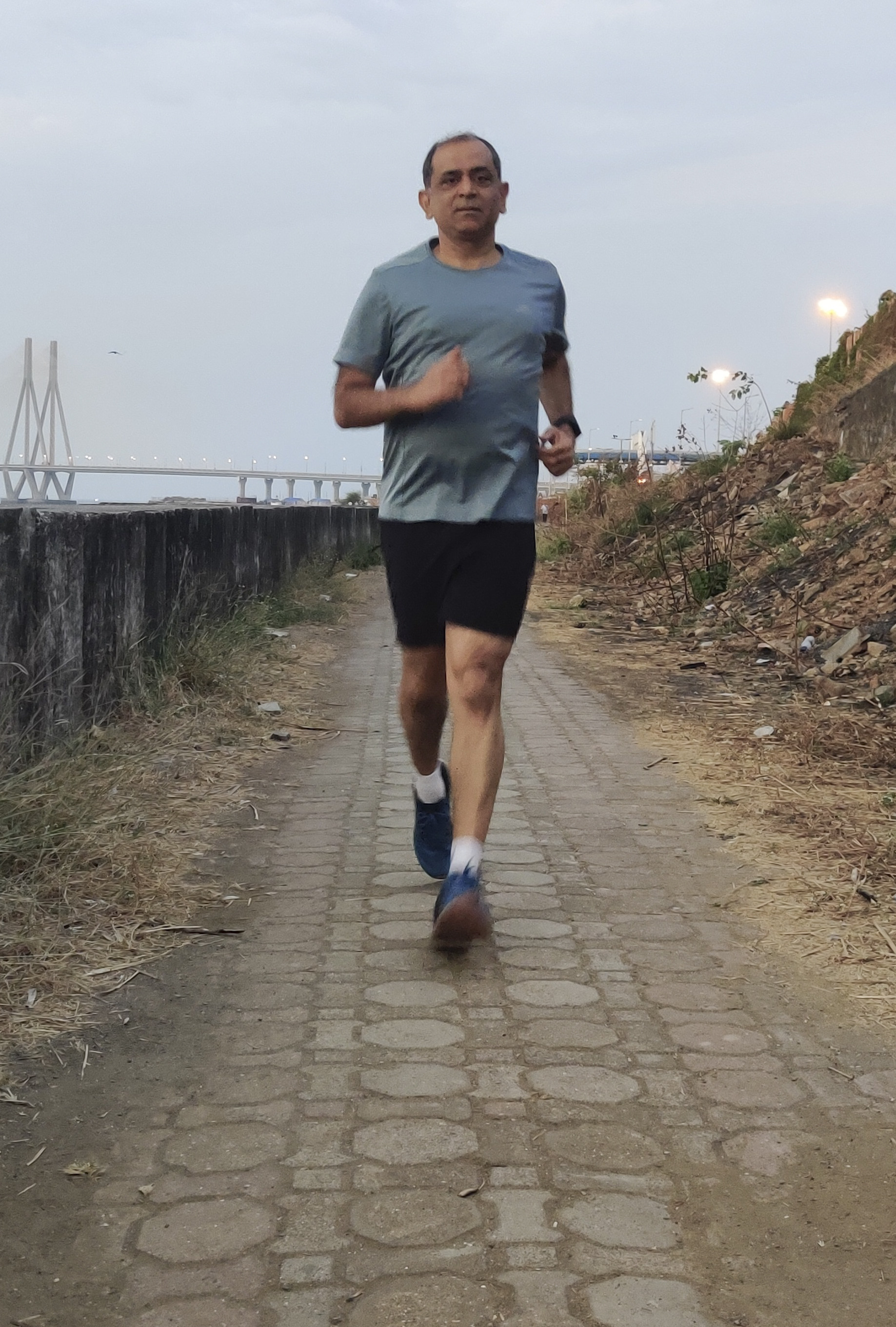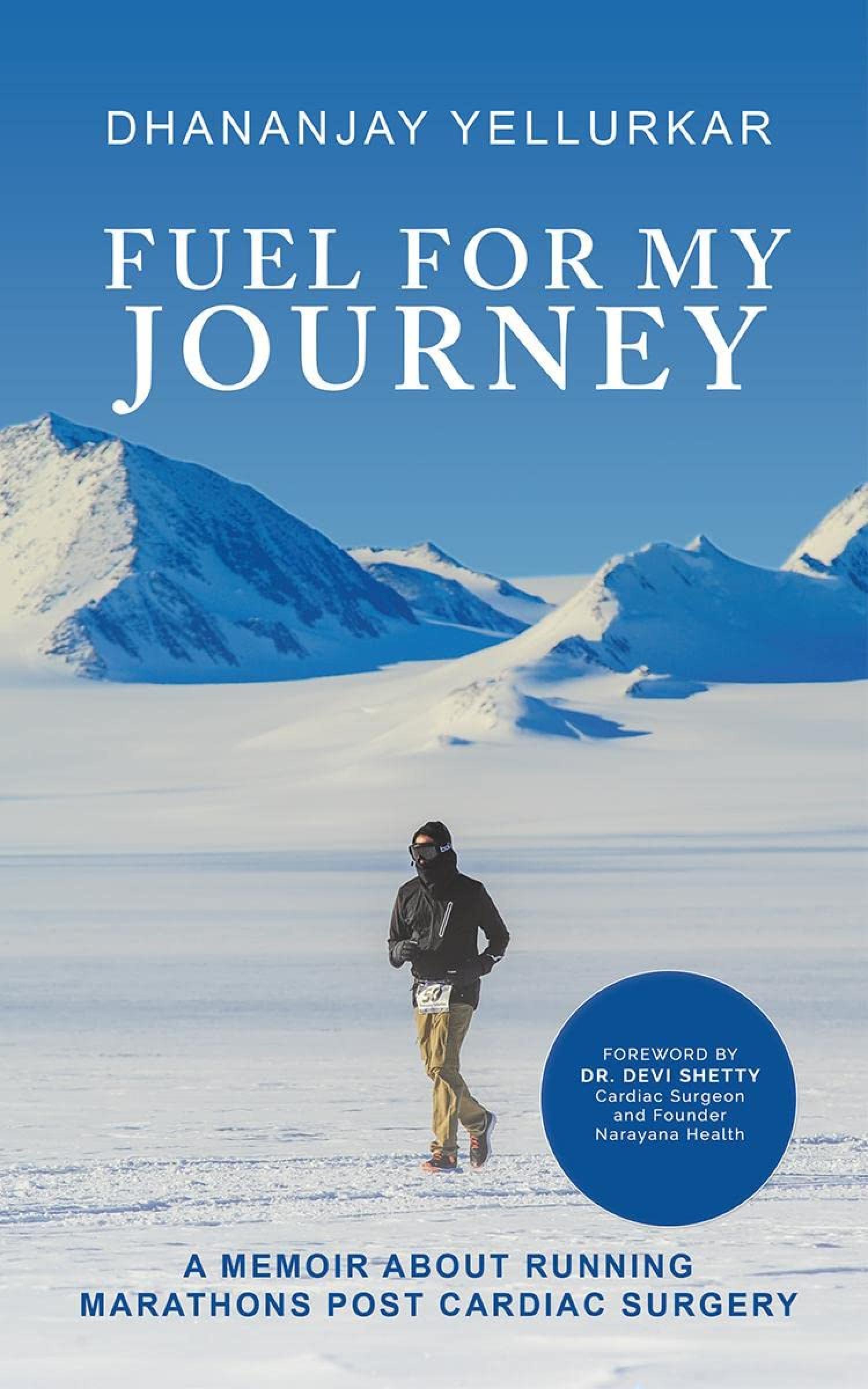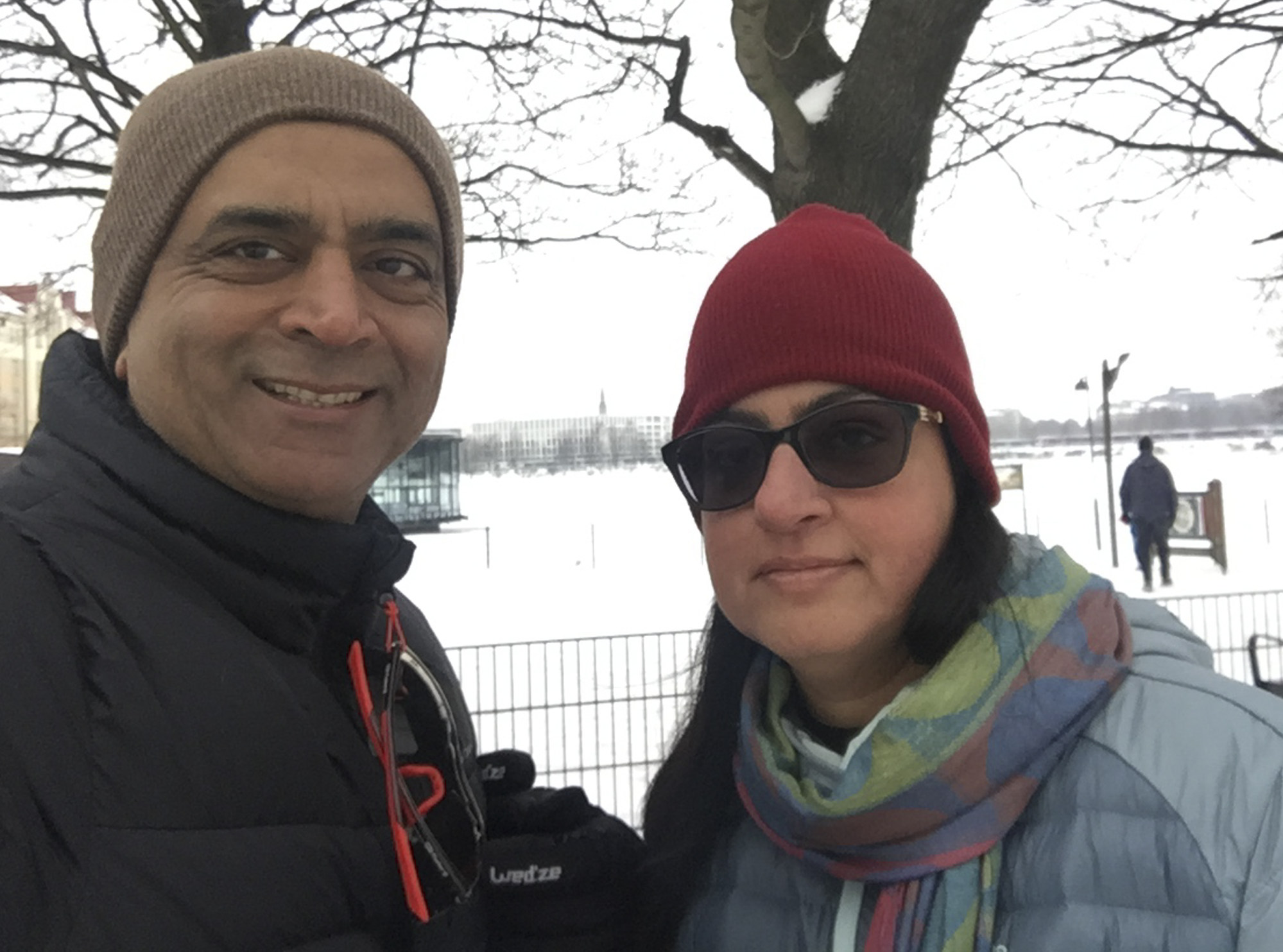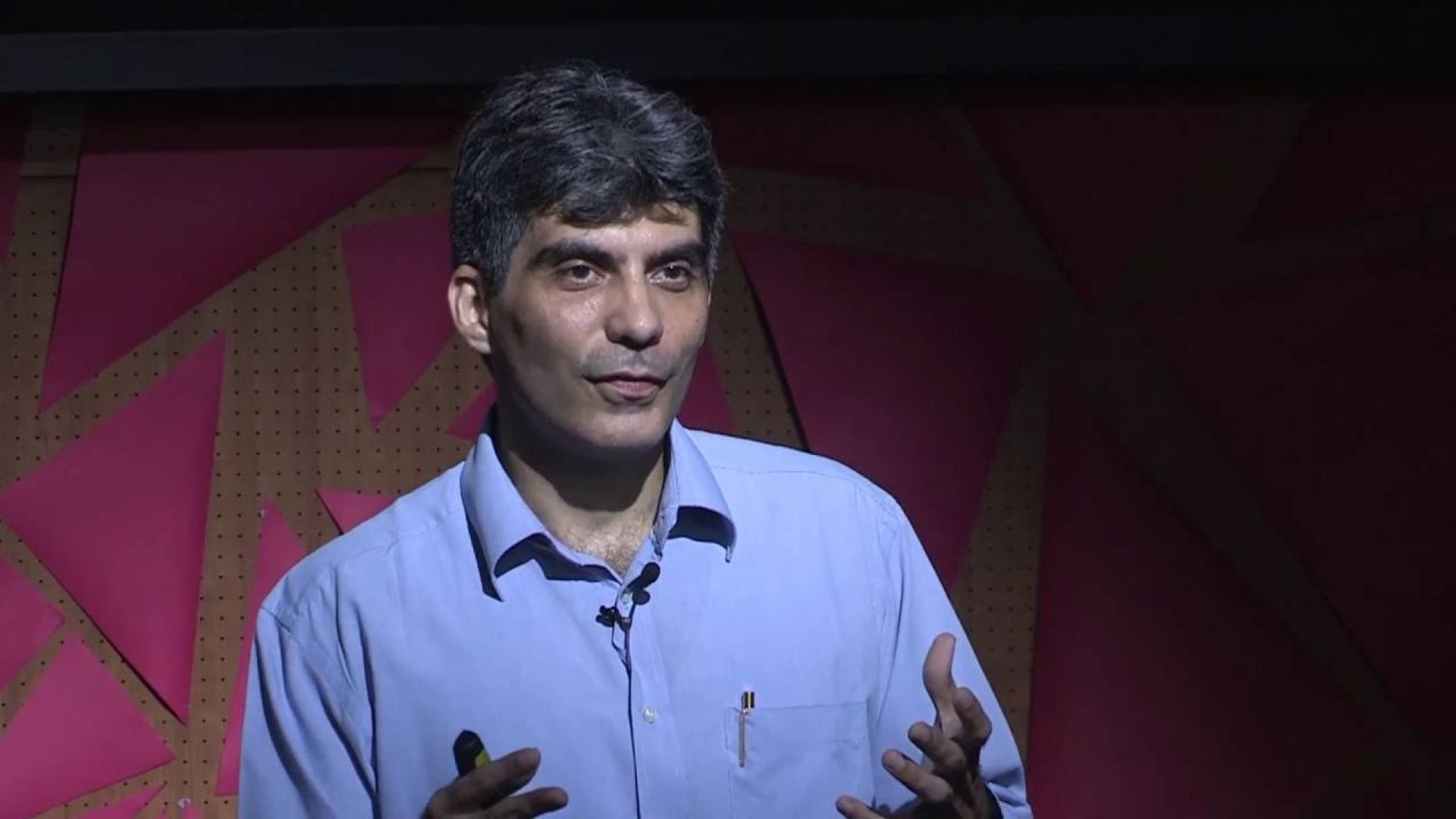
How to recover from a heart attack: running was the perfect medicine for man who had never done sport before – now he does marathons
- Dhananjay Yellurkar took up running after open heart surgery following a heart attack at 46, induced by stress at work and genetic factors, he says
- From the treadmill he started running on the streets and has now completed a marathon on six continents – and will run on the seventh in May
Dhananjay Yellurkar is a poster boy for what a heart patient can achieve.
He suffered a heart attack at the age of 46 and underwent open heart surgery. Seven months later, he ran in his first half-marathon.
Now, at age 59, Yellurkar is preparing for the Santiago Marathon in Chile, in May, to complete his quest of running a marathon on each of the seven continents.
Over the past 13 years, Yellurkar, the chief risk officer at NIIF Infrastructure Finance in Mumbai, India, has run 12 half-marathons, 10 marathons and an ultramarathon.

He has chronicled his metamorphosis from a struggling patient in the aftermath of his surgery into a passionate long-distance runner in his book, Fuel for My Journey, A Memoir About Running Marathons Post Cardiac Surgery, published in 2022.
His story is one of tenacity, grit and hope.
“I was too young to have a heart attack. Nothing in my lifestyle pointed towards lurking heart disease. I weighed 72 kilograms [159 pounds], had normal cholesterol levels and went for a walk every day,” says Yellurkar, who stands 1.75 metres (5 feet 9 inches) tall.
Tips for a healthy heart – are you taking care of yours?
His heart attack was induced by stress at work and genetic factors, he says. Post-surgery, he began to question his fitness level and lost the confidence to resume work.
“I felt as though I had hit ground zero. I had lost 7kg after the surgery and felt weak. I was worried about who would provide for my young family should something happen to me,” he says. His children were 13 and 6 years old at the time.

Yellurkar joined a rehabilitation programme run by the Asian Heart Institute, in Mumbai, the hospital where he underwent surgery.
“Entering the rehabilitation centre was uplifting. It was wonderful to see a gymnasium with patients exercising. I felt that all was not lost,” he says.
“These sessions soon became the best part of my day,” he says.

Then, he took an unusual step for someone recovering from open-heart surgery. The hospital was the medical partner of the Mumbai Marathon, and Yellurkar applied to run the half-marathon.
“I wanted to emerge as physically, mentally and emotionally stronger, and saw the half marathon as an opportunity to regain my self-confidence. Little did I know that I was embarking on a journey that would change my life forever,” says the man who had never played any sport before.

He joined a running group with two dozen runners, most of them in their fifties, including a few fellow heart patients who had run half-marathons. A doctor and seasoned runner was their coach.
How does he do it? Retiree nears 200 marathons in 13 years
“I started running outdoors on the roads of Mumbai and loved it. With each run my confidence soared,” says Yellurkar, who followed a four-day-a-week training schedule consisting of a short run, a medium-paced run, a long run, and one day of stretching and core exercises.

Seven months after his heart attack, he completed the Mumbai Half Marathon in 2 hours 45 minutes.
“I was motivated to increase my endurance levels and applied for a place in the New York Marathon, knowing full well that my chances of getting in were slim.”
A few weeks later he learned he was a winner in the lottery for places.
Running has taken me not only on an external journey to exotic places all over the world, but also on an internal journey that is far more beautiful
His coach suggested a 20-week training programme to prepare for the marathon, comprising of four runs a week – a slow run on Tuesdays, a tempo run on Wednesdays, a hill run on Fridays and a long run on Sundays. He started off averaging 35km (22 miles) a week, eventually increasing it to 70km.
He ran the New York Marathon – his first – in November 2010, 18 months after his surgery, finishing in 5 hours 56 minutes.
Since then, he’s finished marathons on five other continents: in Berlin and Paris in Europe; on the Gold Coast of Australia; in Mumbai in Asia; an adventure marathon in the savannahs of South Africa; and one of the world’s toughest marathons, in Antarctica.

Dr Aashish Contractor, the head of the rehabilitation centre at the Asian Heart Institute at the time of Yellurkar’s surgery and rehab, describes Yellurkar as proof that one can heal and thrive after major surgery.
“It is healthy for heart patients to exercise, albeit with caution, under the guidance of a cardiologist and after clearing the prescribed medical tests,” Contractor says.
He shows Yellurkar’s book to cardiac patients who are concerned their life will not be “normal” again.

Running has allowed Yellurkar to reinvent himself.
“I grew up believing that I was not good at sports, and running has enabled me to break my self-limiting belief. It has kept me physically and emotionally fit, opened my doors to the world, rebuilt my self-esteem and allowed me to contribute to society,” he says, a nod to the time he spends as a volunteer helping the visually impaired run races.
“My wife and children are my biggest supporters. My wife encouraged me to run even though she was worried about my health. My children never complained when on Sundays after my long runs, I rested, instead of spending time with them.”
He could barely run 300 metres. Now, 22kg lighter, he runs marathons
“Meditating for 10 hours a day taught me the universal truth of impermanence and oneness, and the power of observing your breath. It has made me a better runner and taught me not to hold on to anything – a relationship, a job or a finish time at a marathon,” he says.
“Running has taken me not only on an external journey to exotic places all over the world, but also on an internal journey that is far more beautiful.”

